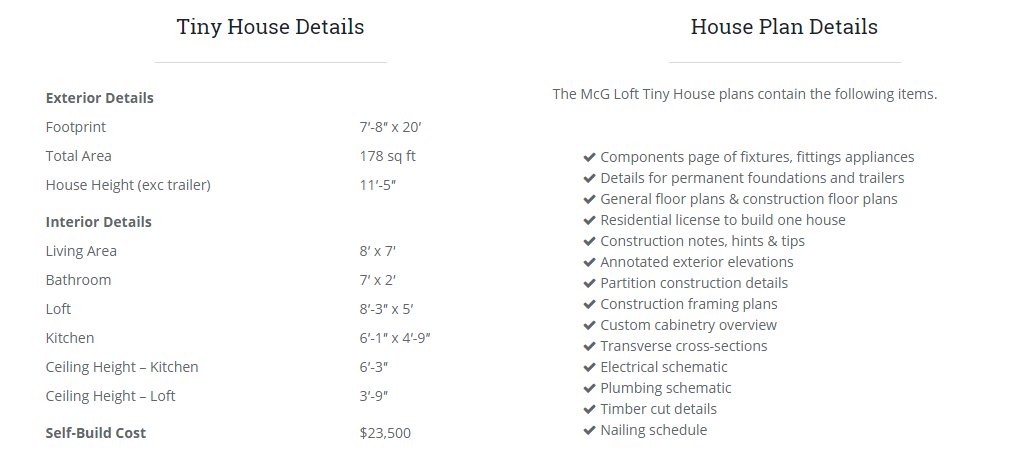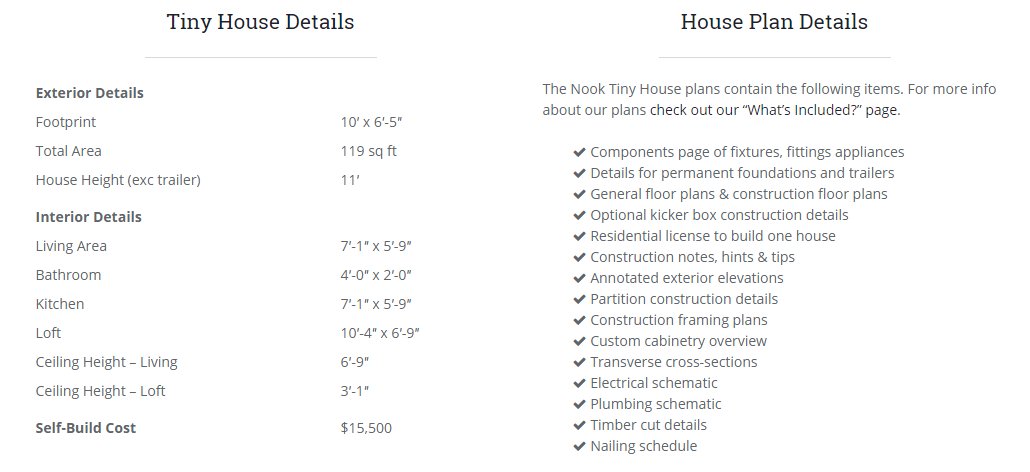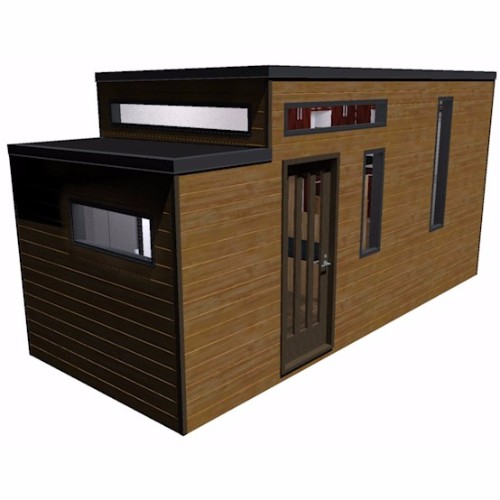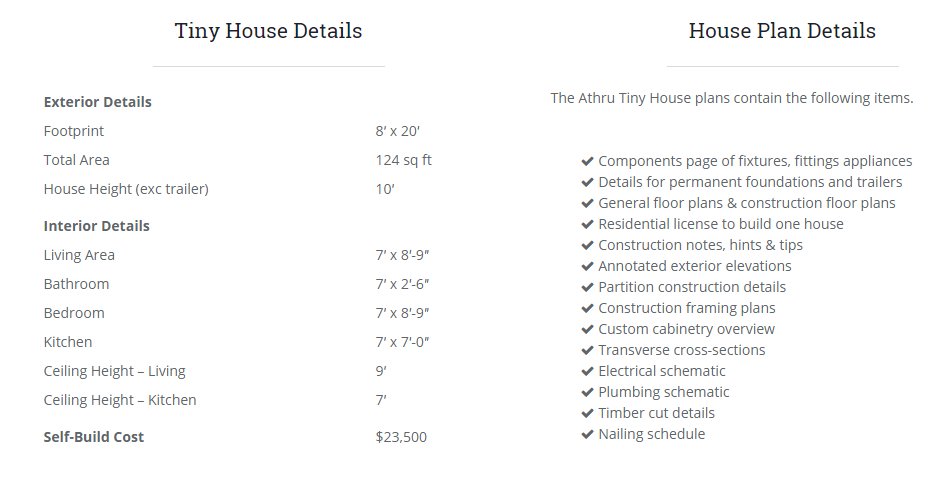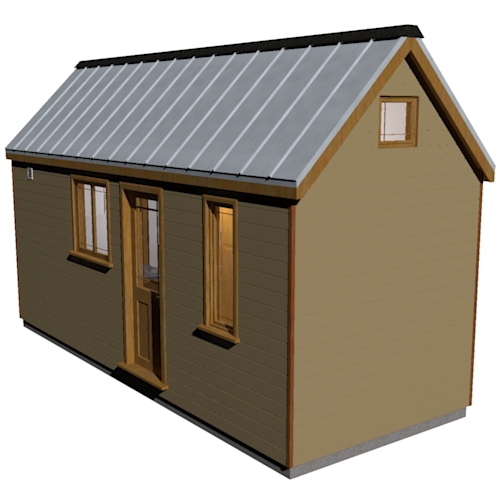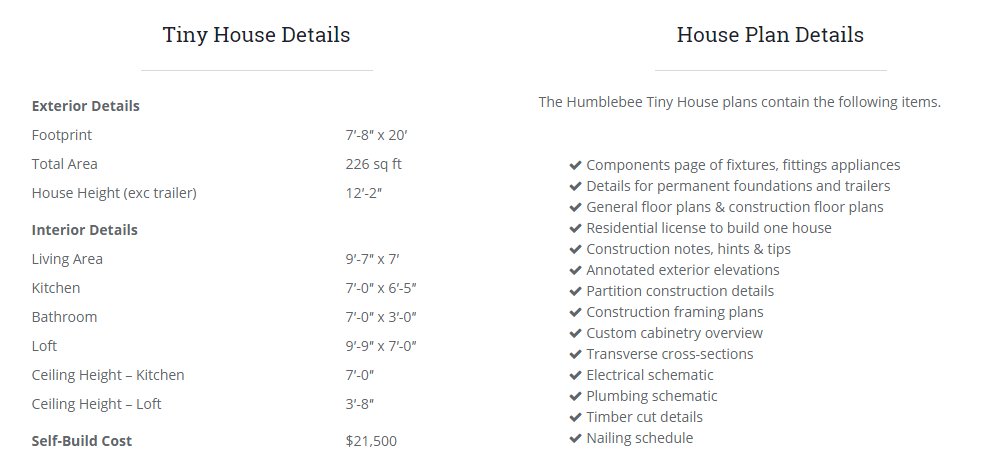Tips for Tiny Home Living.
Don't get kicked off the property or abandon your build because you didn't plan ahead.
- Build nearby - building will be easier and faster if you aren't spending all your time driving to the site.
- Own the land if possible - or at least make sure you have some control. A friend had an argument with the person whose land he was using to build on, and suddenly was asked to move - NOW.
- Go for quality, you will regret cutting corners - do it right the first time. It's a lot easier to measure and fit carefully now, than to tear it out and redo it later.
- Drywall and granite and tile don't always work well - if you move your house often, it needs to be able to flex when on the road.
- Reclaimed materials can help you stretch your budget - but not at the expense of structural integrity. Only use materials you would use anyway...don't just put scrap wood in your house because you have it. It's one thing to improvise, but make sure what you're improvising with quality materials adequate for the job. Make sure you have enough of what you need before you start the project.
- Don't rush - when you rush, you make mistakes. Mistakes will ultimately slow you down.
- What is your time worth? If your time is better spent earning the money to have someone else install the plumbing or roof, rather than you limping along doing something you're unfamilar with - let the professional do it. There are some things you just are not going to be experienced enough to do well. Admit it and use your time better elsewhere.
- Always measure carefully - and then double check.
- If your home will be moved, make sure it's height can fit under power lines. If it will be moved a lot, keep height a priority.
- You can build your tiny house for YOU, but if your good friends are very tall, or heavy,, you may want to make allowances for other people as well.
- Safety first...if you've never used a saw or drill before, know they can be dangerous. Always follow recommended safety procedures.
- Get your items first and build around them - get the windows, doors, larger items and then do your design. It'll save you money.
- RV and Boat suppliers and salvage are great places to look for building materials.
One of my favorite tiny homes....
How do you find property for your tiny house? Do you even need property?
1. Build your tiny home in a friend’s backyard.If land ownership isn’t your primary objective, consider building your tiny house on someone else’s lot as an accessory dwelling unit (ADU). According to the Federal Housing Administration, ADUs are habitable living units located on properties with single-family homes. So, if your friend or family member has land to spare, you could share it under ADU regulations in many states. Just be a good guy and your share the taxes...it's the right thing to do. This isn't a great option because friendships can dissolve, relatives can decide to kick you off and then they become the main homeowner and your investment goes *poof*.
2. Find a job that makes it legal to live in an ADU. Portable tiny homes can be moved anywhere, so moving it to your employer's land is another way around owning the property.
3. Puttng your tiny house on a trailer gives you all kinds of options. A tiny home on wheels, can be certified as a recreational vehicle, provided that it meets RV standards. Keep in mind though, that some building codes prohibit RV owners from living in the vehicles permanently. Some places have less stringent regulations on tiny houses that are portable. The advantage of living in a portable tiny home is that you can move if necessity, or opportunity, dictates. Always research your municipality’s restrictions on RV ownership before deciding whether to register your tiny house as one.
4. Regularly move your tiny house on wheels. That's the reason you put it on wheels isn't it? Bring your tiny house when you travel. Not only does doing this save you money on hotel costs, but it also helps you avoid breaking temporary living rules. If your job requires you to move frequently, tiny home living could be the answer. Moving regularly can enable you to get around restrictions on camping, or keeping your tiny home in one spot for too long. You can stay in campgrounds and State and Federal parks for nominal fees...consider it rent.
5. Only live in your tiny house recreationally. If you use your tiny house recrecreationally, but not permanently, you avoid zoning problems altogether. If you have a piece of land to park it on, you can even rent it out when you aren't using it.
6. Have you heard of land-sharing? If you’re building a tiny home on wheels rather than a permanent foundation, consider participating in what the U.S. Department of Housing and Urban Development calls “temporary urbanism" by planting your tiny house on urban property that’s otherwise not useful. And example is one resident now resides on city-owned land in Washington, D.C. The site of an abandoned middle school. The land is too costly to fix up or tear down, so, instead, the city leases the front of the property to a neighborhood farming guild, which in turn subleases a small plot to the tiny home owner. When they’re ready to start developing the property, you find another place to move.
7. Find a tiny house community or village. These are springing up everywhere. If you’re looking to build your tiny home without having to jump through a lot of zoning hoops, choosing an area that already has other tiny homes is the easiest thing to do. Numerous tiny home communities exist across the country and are good options for those who feel uncertain about sharing land or moving their homes frequently. “A lot of people who come to the tiny house movement are specifically looking for that community experience anyway.
8. In many parts of the country, zoning laws prevent tiny homes built on foundations and those not considered accessory dwelling units. And despite zoning laws that make it difficult to build a tiny house in some areas, tiny homes are becoming common in others. With the help of TinyHouseListings.com, GOBankingRates you can identify cities where these homes are popular based on the number of tiny houses listed for sale.
Some of the cities that permit tiny houses are Walsenburg, Colo.; Canyon County, Idaho; Ashland, Ore.; and Richmond, Maine. Additionally, Pulaski County, Ky., has no zoning laws, a fact that makes it a great choice for tiny home dwellers.
9. Opt for a small home that isn’t technically a tiny home. If strict zoning laws have you feeling left out of the small house movement, you might want to opt for a house that’s slightly larger than tiny. Walker suggests looking for homes that are smaller than traditional houses but not quite as minute as those found in tiny home communities. The Upper Peninsula of Michigan has many of these homes - used as hunting cabins originally - fixed up they become dwellings. Very old homes in New England, often measure in below present-day zoning minimums. If you can find such a home, you can be grandfathered in with that footprint.10. Petition your local government to change its rules. Nobody likes to mess with this, but if you dislike your town, city or county’s zoning laws, you might be able to petition to have them changed. For example, North Carolina has a Small Home Advocacy Committee, a volunteer group that’s working with the city council and planners to make tiny houses more viable within the city.


